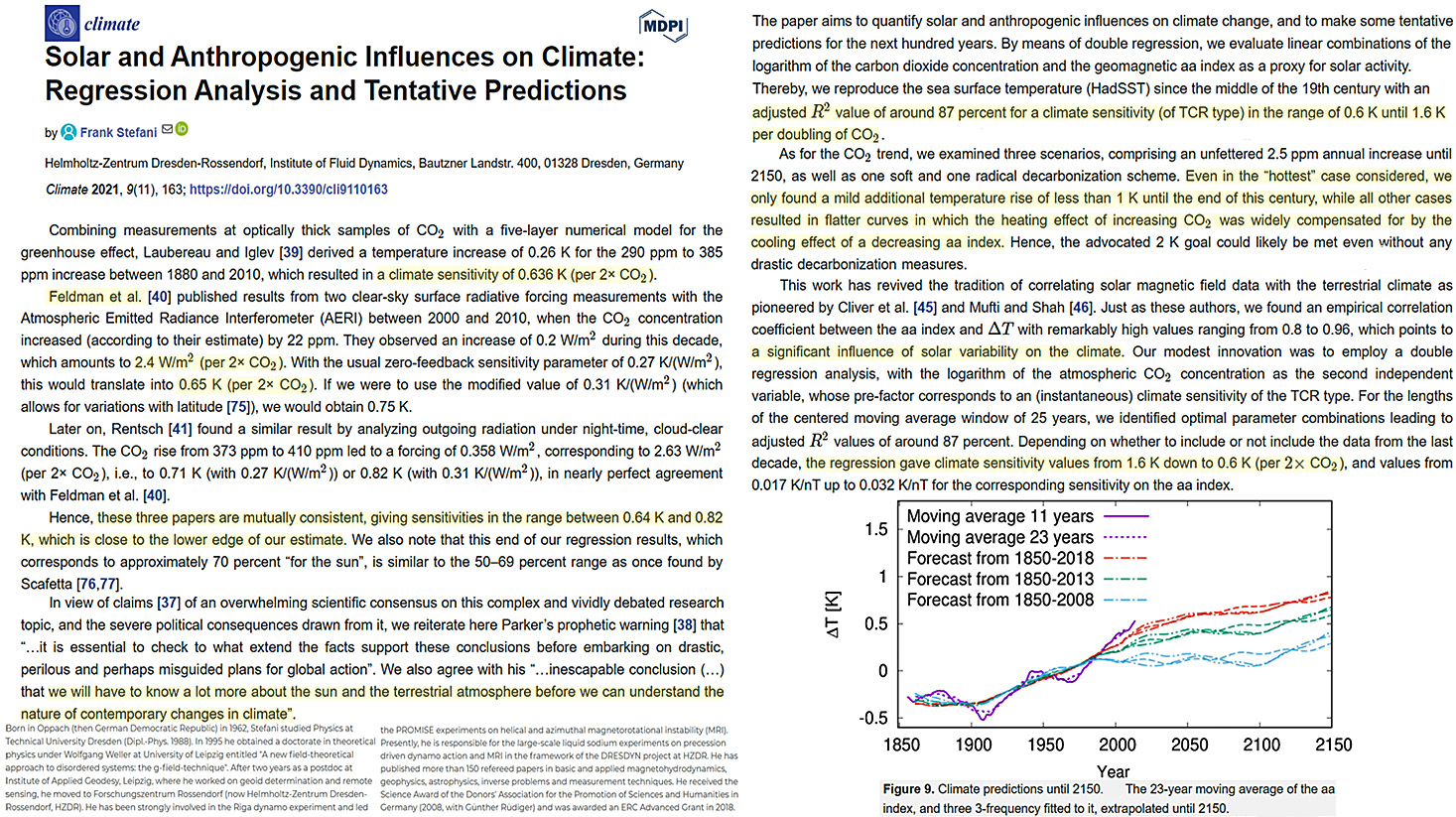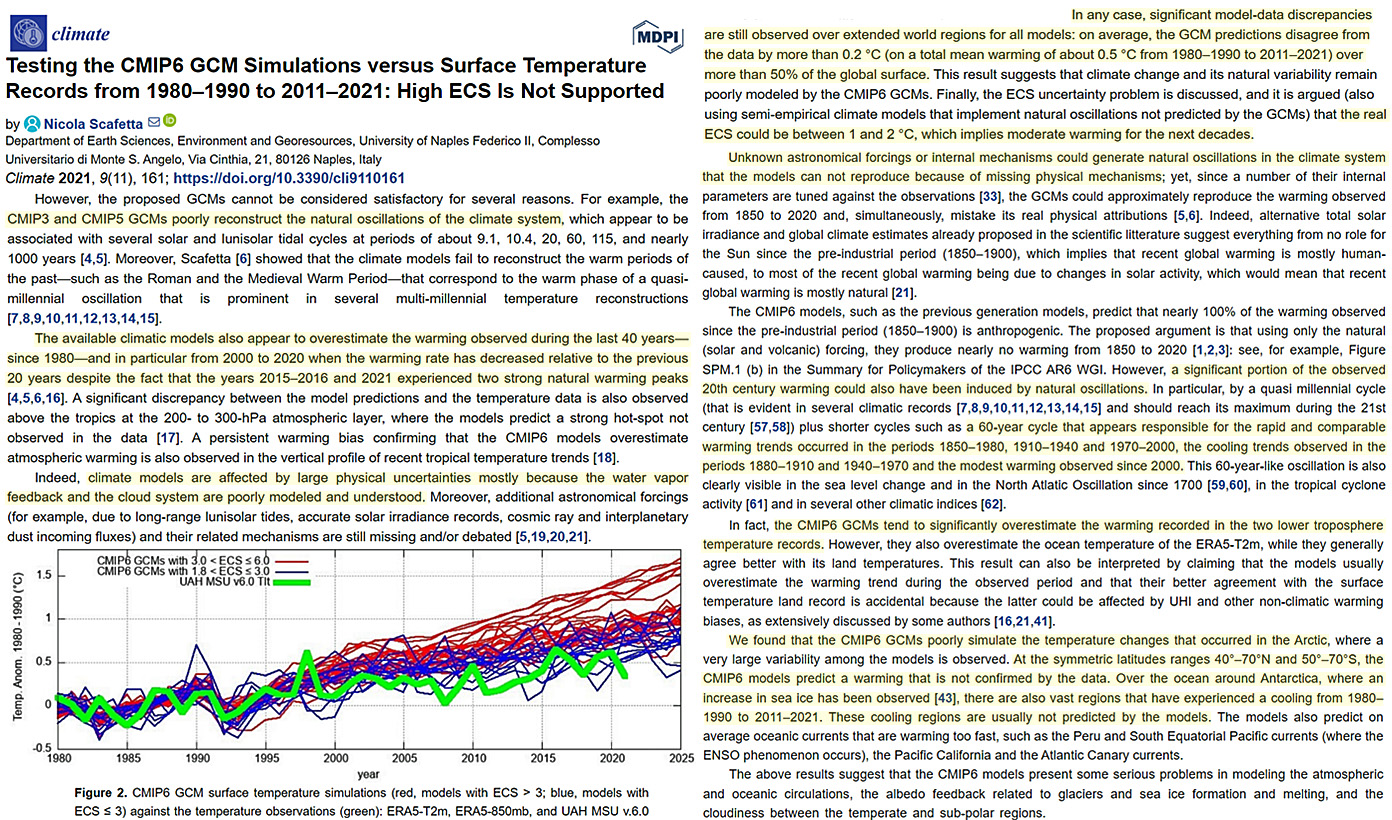Astrophysicists conclude climate models are deeply flawed. Doubling CO2 to 560 ppm only elicits about 1°C warming.
Dr. Frank Stefani is an astrophysicist who has published several recent papers (Stefani et al., 2016, Stefani et al., 2017, Stefani et al., 2018, Stefani et al., 2019, Stefani et al., 2020) on the role of solar cycles in modulating change in the Earth system, including climate.
In a newly published paper in the journal Climate Stefani used regression analysis to arrive at the conclusion the doubled CO2 climate sensitivity ranges from 0.6-1.6°C. He summarized compatible CO2 climate sensitivity estimates (Laubereau et al., 2013, Feldman et al., 2015, Rentsch, 2020) that also range from 0.64-0.82°C when doubling CO2 from 280 to 560 ppm.
Stefani forecasts less than 1°C warming by 2100 even without CO2 mitigation policies.

Image Source: Stefani, 2021
Dr. Nicola Scafetta is another astrophysicist who has concluded the consequence of doubling CO2 (280→560 ppm) “could be between 1 and 2°C” in a new paper also published in the journal Climate. He asserts a significant portion of the warming in recent decades “could have been induced by natural oscillations.”
Scafetta is highly critical of the flawed model-based overestimation of warming associated with rising CO2 emissions. He emphasizes just how much climate model estimates diverge from observations, as modeled “predictions disagree from the data by more than 0.2°C (on a total mean warming of about 0.5 °C from 1980–1990 to 2011–2021) over more than 50% of the global surface.”






CO2 peaked for 2021 in May at a monthly average of 419 parts per million.
560 ppm due in about 70 years.
End of the world delayed.
What amused me was the test tube experiments where they increased the Co2 levels to illustrate warming, of course the increased CO2 was probably in the range of 500,000 ppm.
I love how no one has done an experiment where they increased the CO2 to an actual measured 800ppm. Now wouldn’t that be exciting.
Not that this answers your request, but it is related, and with nearly 400 comments you can spend the day reading. It is 10 years old.
https://wattsupwiththat.com/gore-and-bill-nye-fail-at-doing-a-simple-co2-experiment/
New research shows that changes in the upper atmosphere and ionosphere are driven by winds in the troposphere. That is interesting, indicating a direction of causality from lower atmosphere to upper. A lot of commentary on solar phenomena asserts the opposite, that solar wind, and magnetic and other phenomena in the upper atmosphere exert an effect downward, impacting on the lower atmosphere and climate.
https://www.nature.com/articles/s41561-021-00848-4
If there is causal effect in the other direction, from lower atmosphere weather all the way up to ionosphere, that could be challenge to hypotheses of solar and astrophysical causation of climate changes. With causation shown to exist in the other direction, bottom to top of atmosphere, this raises the risk of data interpretation being confounded by cause-effect ambiguity. Phenomena in the ionosphere could be effects, not causes, of tropospheric weather and climate changes.
[…] 2 More Studies: The Climate’s CO2 Sensitivity Is Low…Models Erroneously Overestimate CO2… […]